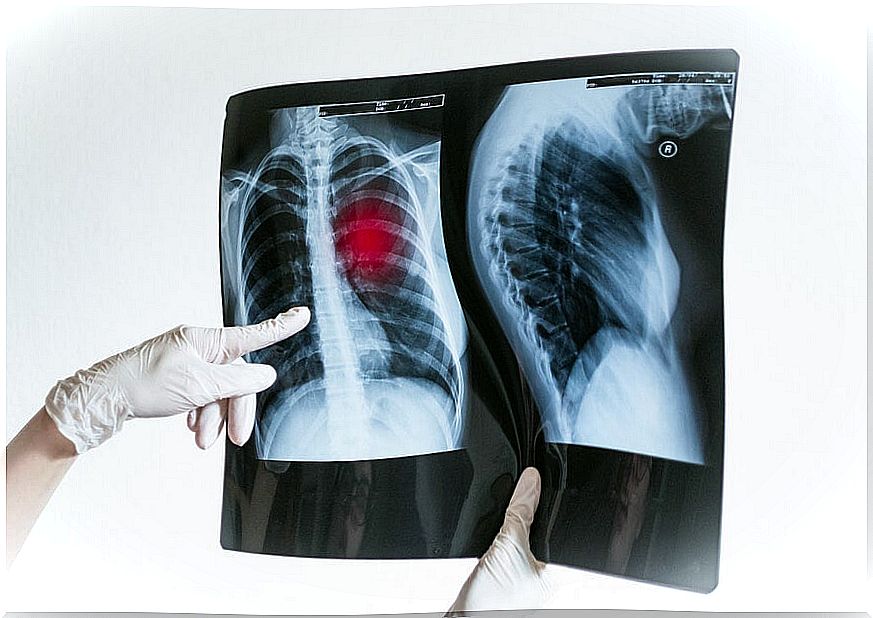What Are The Consequences After Pneumonia?
Pneumonia is the infection that produces the highest number of hospital admissions; in fact, 10% of these end up in Intensive Care Units (ICU). In addition, the sequelae of pneumonia can be multiple and can vary between adults and children.
According to data from the World Health Organization (WHO), this disease causes the death of approximately 1.6 million people in the world each year. How is it produced? What sequelae can it leave in some patients? In this space we want to detail it.
What is pneumonia?
Pneumonia is a very common lung infectious disease in our environment. It consists of an inflammation of the lung tissue, accompanied by an increase and condensation of secretions in the alveolar spaces (lung sacs where the gas exchange of oxygen and CO2 takes place).
In this way, there is an alteration in lung functions, which puts health at risk. Although most of the cases resolve without complications, some patients are left with sequelae that affect their quality of life.

What is the prognosis for pneumonia?
To understand it better, the prognosis of a disease is measured as the expected result of that pathology, the chances of recovering from it and the possible sequelae that will remain afterwards. The prognosis of pneumonia is closely related to various conditions or factors, such as:
- The age of the person. The older the prognosis is, the worse the prognosis, due to the decrease in defenses.
- Status of the person. Presenting other chronic diseases worsens the prognosis. Examples: diabetes, COPD, immunosuppression (low defenses), heart or kidney failure, cancer, recent traumatic accidents, and so on.
- Toxic habits. Smoking or alcoholism increases the risk of complications.
- Severe onset of the disease. The prognosis worsens the more aggressive the pneumonia.
- Diagnostic stage. The sooner it is diagnosed, the more likely a successful course of the disease is.
- Inadequate or late treatment. Failure to treat pneumonia in time, or to treat it with medications that are not specific for its cause, increases the risk of complications.
- Cause of pneumonia. If the bacteria or virus that causes pneumonia is not the most common, in the absence of a specific treatment, the prognosis worsens.
What are the sequelae of pneumonia?
In general, one of the most determining factors in reducing the complications and sequelae of pneumonia is the early diagnosis of the disease. If there is no good evolution in the first week of treatment, complications or sequelae should not be ruled out.
For scientists, it is not the same complication as sequel. In the case of the sequel, it turns out to be permanent or prolonged damage as a consequence of the disease (it can even affect life after its appearance).
A complication is a serious problem that happens during the acute disease process. If they happen during the evolution of pneumonia, they increase the risk of suffering sequelae.

Sequelae of pneumonia in adults
Among the sequelae of pneumonia, influenced by the risk factors that we have discussed, the following may appear:
- Pleural effusion (Bronchopleural fistula). An accumulation of the pulmonary fluid from pneumonia occurs in the layers surrounding the lungs (pleura). This does not allow the lung to ventilate properly. Causes respiratory failure.
- Lung abscess. Collection of pus in the lung spaces.
- Bronchiectasis. Dilation of the bronchi, which alter normal lung function.
- Sepsis. The infection can spread to the blood and other regions by coming into contact with broken blood vessels (from the force of coughing).
- Cardiovascular disorders. Increases the risk of heart disease. Pneumonia makes the heart work harder, trying to help the lung remove fluid and transport gases through the blood.
- Worsening of previous diseases (diabetes, kidney and heart diseases, autoimmune diseases, etc.), but especially respiratory diseases (for example: COPD).
Sequelae of pneumonia in children
As a general rule, pneumonia in children is caused by viruses that, in most cases, do not cause sequelae. If produced, these can be:
- Bronchiectasis. As in the case of adults.
- Obliterative bronchiolitis. There is a narrowing of the pulmonary sacs.
- Bronchial hyperresponsiveness. These are lung spasms (bronchospasm) when exposed to elements such as food or the environment (elements such as dust, pollen, among others). It courses like what we know as asthma.
- Bronchial hypersecretion. Production of large amounts of mucus. The lung becomes more sensitive to substances in our environment.

Aftermath of pneumonia: what to remember
In both adults and children, the greatest complication and, therefore, permanent sequela, is death. Therefore, early treatment of what is considered one of the greatest current pathologies is essential.
Faced with any suspicion of this respiratory disease, it is advisable to attend a health care service for the assessment and reduction of possible sequelae.
But the most important thing to avoid pneumonia is prevention, through pneumococcal vaccination and good eating and health habits.









